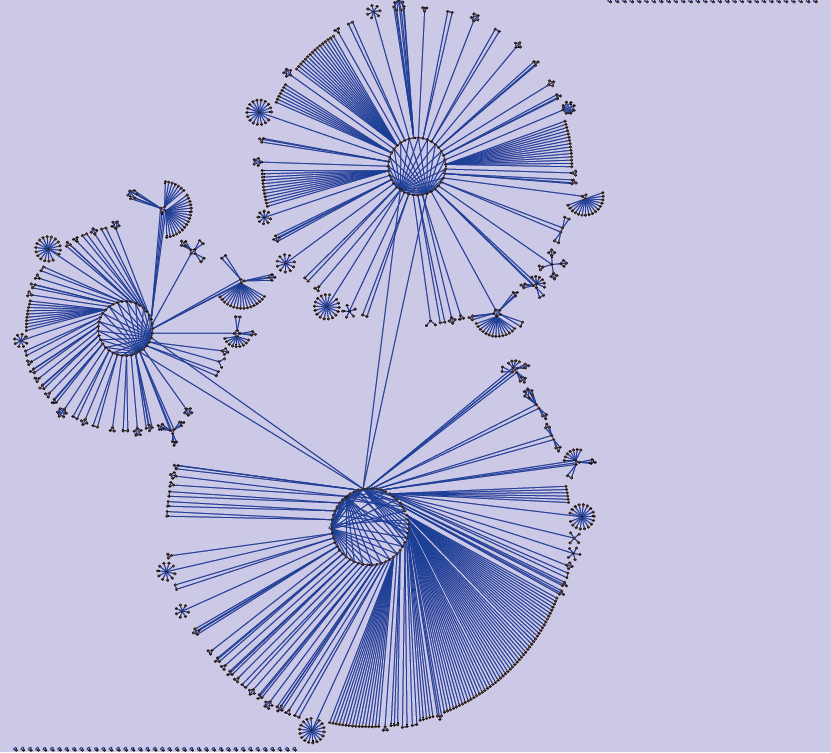
RANGE (RAndom Network GEnerator) and the NEMO (NEtwork MOtif) language
Download ver 1.7
RANGE will generate large random transcription networks, with up to
16,000 genes, in the NEMO language, producing a
"fat-tail" distribution, whose higher degree nodes follow a power-law.
NEMO's compiler (nemo2sbml) uses lex and yacc to output a Systems Biology
Markup Language (SBML) model for either
user-specified and/or randomized gene input functions. The randomized gene
input functions are Generalized Hill Functions with non-linear terms
representing interaction between transcription factors, whose parameters are
randomly picked. Users of 1.6 or 1.5 should upgrade to 1.7 due to a
conceptual error, see README.txt.
Importing an SBML model of a known network
into a biochemical simulator (i.e. COPASI)
allows the generation of synthetic microarray data for algorithm development
purposes. A script in the R language adds noise to the synthetic data.
Alternately, NEMO may be used by itself to simply
describe and SBML-ize your existing biochemical network.
NEMO has language constructs for network motifs
as categorized in:
An Introduction to Systems Biology: Design Principles of Biological Circuits
Uri Alon, Chapman & Hall/CRC; 1st edition (July 7, 2006)
The current default behavior is that all transcription factors are active. In
order to simulate the allosteric effects of signal transduction, groups of
transcription factors may be turned on and off by editing the
SBML model's XML appropriately.
Citation:
Bioinformatics 2008 Jan 1;24(1):132-4
Networks may be visualized in cytoscape by passing a '-x' flag to nemo2sbml,
which outputs an XGMML file in addition to the SBML file.
Example networks:

A 100 gene network in XGMML produced by RANGE/NEMO.

A 1000 gene network in XGMML produced by RANGE/NEMO.

Example expression output for 75 genes from a 500 node network generated by RANGE.
The compiled network was run through the COPASI biochemical simulator.

James Long
International Arctic Research Center
University of Alaska Fairbanks
PO Box 757340
Fairbanks, AK 99775-7340
USA
Voice: (907) 474-2440
jlong@alaska.edu
RANGE/NEMO was developed while employed at the
Biotechnology Computing Research Group,
supported in part by Grant Number 5P20RR016466 from the National Center for
Research Resources (NCRR), a component of the National Institutes of Health
(NIH), with prior support from 2P20RR016466-040005 and 2P20RR016466-049001,
PI Thomas Marr.



